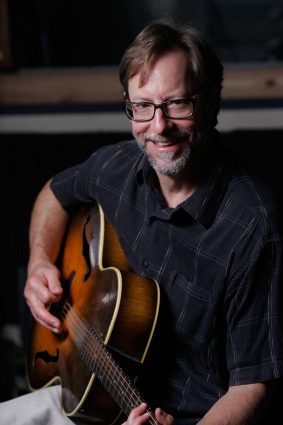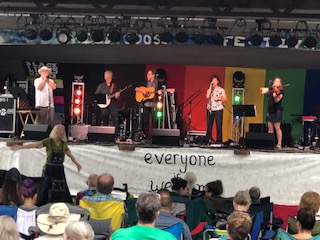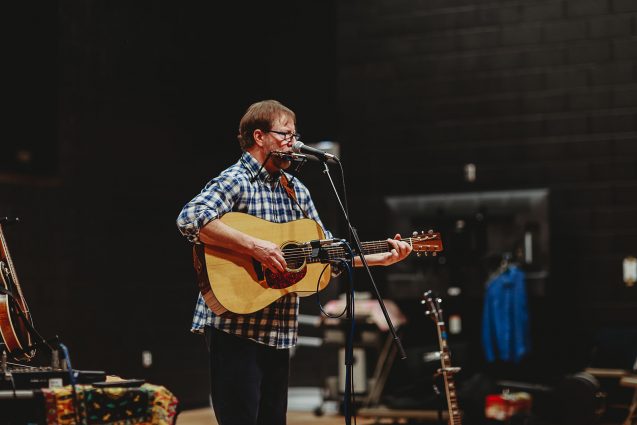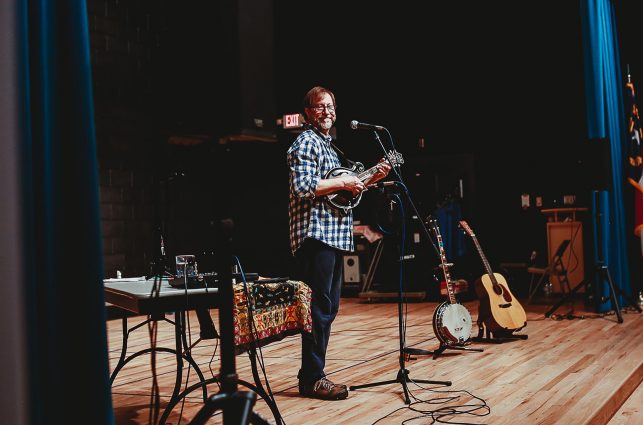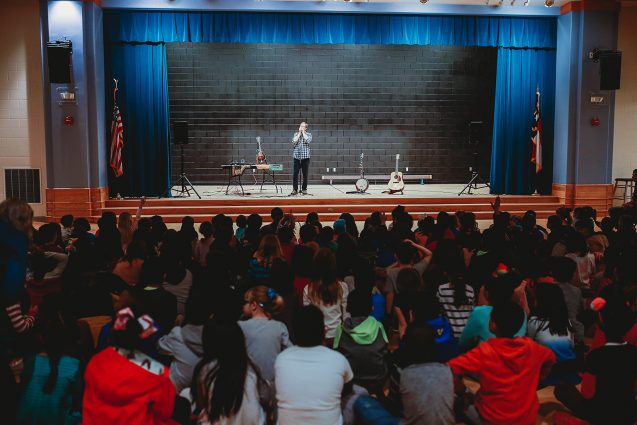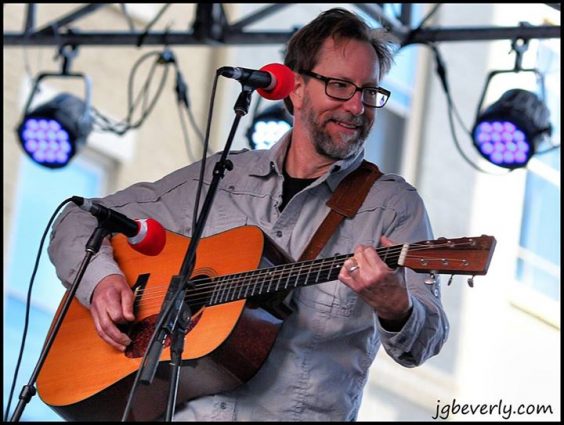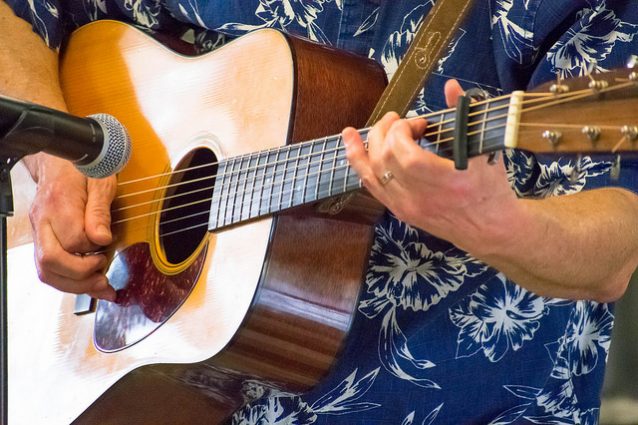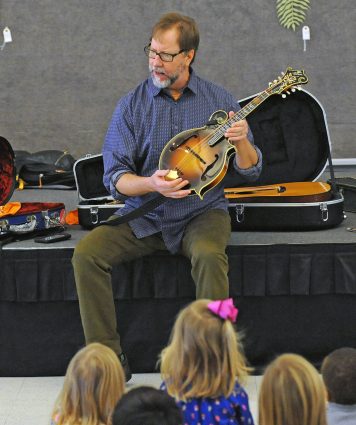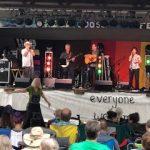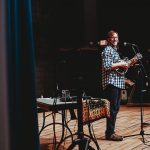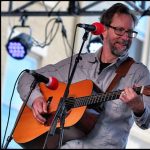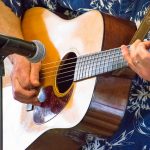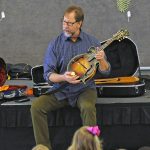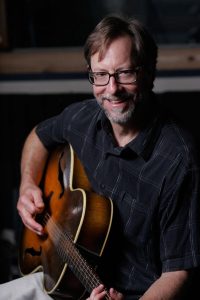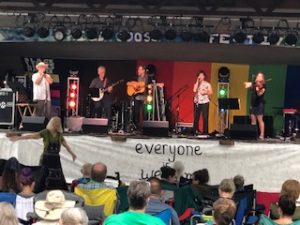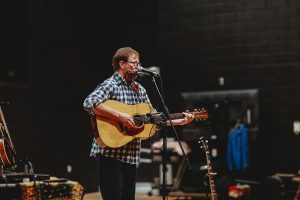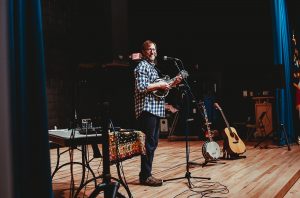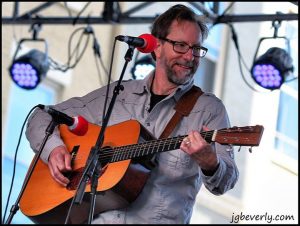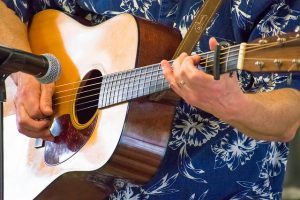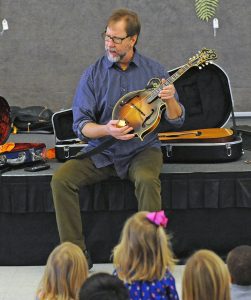Charles Pettee - Hear the Sound
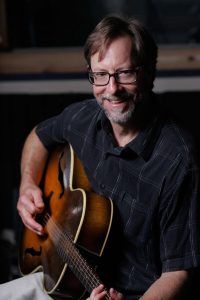
Charles Pettee, guitar and mandolin-wielding songwriter from Asheville, NC, loves sharing not only the catchy rhythms of NC Bluegrass and Folk music, but also the segregation-defying stories behind this culturally diverse tapestry of sounds. Transitioning from fronting Chapel Hill, NC’s
…
View moreEducator CONTACT INFO
SELECT A PROGRAM
Bluegrass: North Carolina's Global Music

Program Description
Charles Pettee’s “Bluegrass: North Carolina’s Global Music” (grades 6-12) picks up the international and historical themes from Charles Pettee’s “Bluegrass Stomp” (grades 3-5) program, and expands on these for middle and high school audiences. Singing and performing on guitar, mandolin, banjo and harmonica, Mr. Pettee surveys the development of American folk music over time, and shows
...Booking / scheduling contact
Program Detail
EDUCATION STANDARDS
SL4: “Present information, findings, and supporting evidence such that listeners can follow the line of reasoning and the organization, development, and style are appropriate to task, purpose, and audience.” In his presentations, Mr. Pettee demonstrates a variety of musical styles from around the world that combined in the US to provide the ingredients for NC Bluegrass music. By the end of a program or residency, many students will be able to “hear” how, for example, sounds from West Africa played on a banjo, have been carried over to the harmonica or guitar to make what are now known as “blues” music. Mr. Pettee also describes how these “blues” sounds form the basis for Bluegrass, Jazz, and Rock. L3: “Apply knowledge of language to understand how language functions in different contexts, to make effective choices for meaning or style, and to comprehend more fully when reading or listening.” Regarding music as “language” please see the SL4 and R6 above. Regarding song lyrics as language with different meanings and uses, every program contains a variety of songs, whose lyrics express either historically significant moments (e.g., the Civil War, or the Underground Railroad), tell stories (e.g., “The Lollipop Tree” song), or simply provide clever, catchy rhythms and rhymes (e.g., ‘Old Joe Clark” or “Ain’t No Bugs on Me”)
* 6.ML.1.3 Recognize expressive elements (such as dynamics, timbre, blending, and phrasing) of music. * 6.MR.1.1 Illustrate perceptual skills by moving to, answering questions about, and describing aural examples of music of various styles and cultures. * 7.CR.1.3 Understand the functions music serves, roles of musicians, and conditions under which music is typically performed. * 8.CR.1.1 Understand the role of music in North Carolina and the United States in relation to history and geography. * B.CR.1.1 Use music to explore concepts in world history and relate them to significant events, ideas, and movements from a global context. * B.CR.1.5 Compare the various roles that musicians can and do perform and the conditions under which music is performed. * I.CR.1.5 Classify specific musical works in terms of the particular culture and time period in which they were produced. * P.CR.1.1 Understand the role of music in United States history as a means of interpreting past eras within an historical context. Social Studies Connections: *7.C.1.2 Explain how cultural expressions (e.g. art, literature, architecture and music) influence modern society. *8.C.1.1 Explain how influences from Africa, Europe, and the Americas impacted North Carolina and the United States (e.g. slavery, the decline of the American Indian populations).
Qualifications
PHOTOS
VIDEOS
References
Several letters or emails regarding Mr. Pettee's various programs
CP-School-Letters-of-Recommendation-2022.pdf
